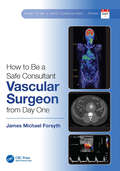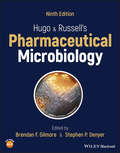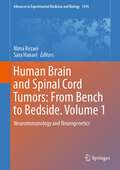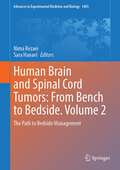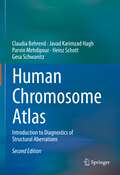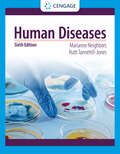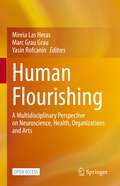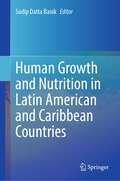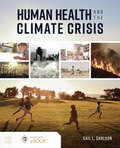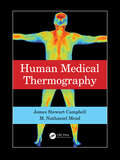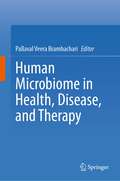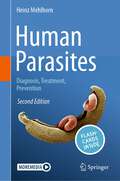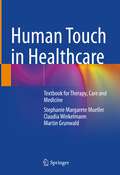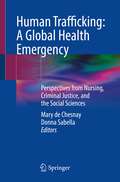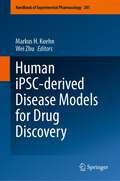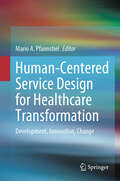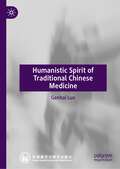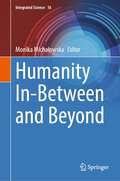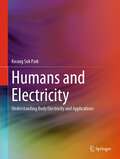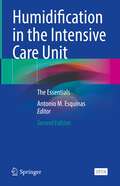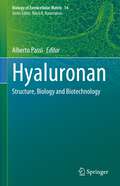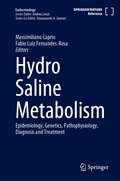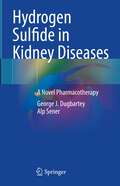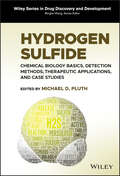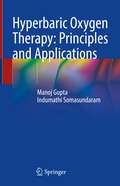- Table View
- List View
How to be a Safe Consultant Vascular Surgeon from Day One: The Unofficial Guide to Passing the FRCS (VASC)
by James Michael ForsythThis is a highly pragmatic and down-to-earth guide to the “real world” of vascular surgery, written to help trainees pass the FRCS (Vasc) Examination the first time around, hopefully with flying colours! Through clear and concise chapters, a review of relevant vascular surgery papers, a solid grounding in up-to-date and relevant UK and European guidelines, and mock examination questions, this book should give candidates a fighting chance at exam success. Using his early experience, and insight gained from senior consultant vascular surgeons and mentors, author James Forsyth dispenses both facts and pearls of wisdom as he takes the prospective vascular surgeon through the core topics pertinent to a day one vascular consultant. This guide specifically covers: • “Building a strong foundation” with a focus on patient counselling, presentation skills, clear documentation, professionalism, and a foundational grasp of the key evidence base for vascular surgery • “Core vascular surgery topics” from chronic limb-threatening ischaemia to aorto-iliac aneurysms to symptomatic carotid artery disease to chronic venous disease • Pragmatic guide to the “bread & butter” vascular surgery operations • Fifty mock SBA assessment questions and answers, and numerous mock FRCS short and long cases that are blended into reality-based discussions to draw out key learning points This book is essential to any budding vascular surgeon intending to sit the FRCS (Vasc) examinations, and those who are about to start off as real day one consultant vascular surgeons. Indeed, the FRCS (Vasc) Examination is a bridge to becoming a true consultant vascular surgeon, and this book therefore is a “must-read” for anyone looking to cross that bridge.
Hugo and Russell's Pharmaceutical Microbiology
by Brendan F. Gilmore Stephen P. DenyerHugo & Russell’s Pharmaceutical Microbiology Discover the very latest developments in pharmaceutical microbiology in the 9th edition of this popular textbook Microbiology is one of the essential pharmaceutical sciences upon which the study and practice of pharmacy is built. It has a bearing on all aspects of the manufacture of medicines and sterile products, from their design and development to their delivery as quality products. Few interventions are more central to modern medicine than the treatment of infection, where antibiosis, vaccination and hygienic practices have essential roles to play. The COVID-19 pandemic, the appearance of new pathogens and the rise of antibiotic resistance have demonstrated most completely the need for pharmaceutical practitioners, researchers and industrial scientists to be fully conversant with this field. The 9th edition of Hugo and Russell’s Pharmaceutical Microbiology has been updated to meet this need. Having long served as the sole comprehensive textbook covering this subject, it has now been adapted to a critical new period in the advancement of medical and pharmaceutical research and development. Its experienced editors have incorporated contributions from subject experts and created a text which will serve the next generation of pharmacy students, pharmaceutical industry scientists and researchers. In this ninth edition of Hugo and Russell’s Pharmaceutical Microbiology, readers will find: A mix of established and new authors bringing practical and research experience to their chapters Material covering the fundamentals of microbiology, microbial behavior and laboratory investigation Revised chapters incorporating new material on microbe-host interactions, antibiotic resistance, emerging pathogens, public health microbiology, healthcare-associated infection and pharmaceutical manufacture Emerging understandings from the COVID-19 pandemic on infection prevention and control and vaccine development Practitioners providing their insights on clinical practice and pharmaceutical production An accompanying website incorporating teaching resources Hugo and Russell’s Pharmaceutical Microbiology, 9th edition promises to remain the essential text for pharmacy and medical students, as well as researchers and industry professionals.
Human Brain and Spinal Cord Tumors: Neuroimmunology and Neurogenetics (Advances in Experimental Medicine and Biology #1394)
by Nima Rezaei Sara HanaeiBrain tumors comprise about 5–9% of all human neoplasms; and interestingly the central nervous system (CNS) neoplasms are ranked among the most prevalent neoplasms of childhood as well. Besides to the morphologic and histopathologic characteristics, and as each pathologic states first starts with molecular alterations, each tumor may have its own story in the matter of activating tumorigenesis pathways and having specific molecular characteristics. Importantly, the molecular classification of tumors has been highly considered in the past few decades for taking the most appropriate therapeutic approach. On the other hand, the tumors shall have tumor-scape mechanisms preventing the immunologic system to eliminate its invasion. The failure of innate and acquired immune system to defeat tumorigenesis mechanisms would consequently result in tumor development. Interestingly, the neuro-immunologic mechanism plays a role in development of psychiatric manifestations of brain tumors as well. Taking all these to account, the different arms of innate immunity, acquired immunity, and genetics have been approached to defeat development and/or progression of such tumors. Accordingly, the activation immunotherapeutic approaches focus on activating or strengthening the anti-tumor immunologic pathways in order to assist the weakened immune system to defeat the tumor (such as Dendritic cell vaccination, DNA vaccines, peptide vaccines, viral vector-based vaccines, monoclonal antibodies, and CAR T-cell therapy). In addition to immunologic components of brain and spinal cord tumors, numerous genes and genetic pathways have been recognized to take part in tumorigenesis. Taking these non-immune genetic pathways to account, some other therapeutic approaches such as stem cell therapy and gene therapy have been developed in the new era of cancer treatment. Moreover, and besides the biologic and medical aspects of these tumors, different physical/mathematical models have been proposed to either explain or predict tumor behavior. Such models would be advantageous in developing new therapeutic modalities in pre-clinical stages and enter new eras in cancer treatment. The first book of Human Brain and Spinal Cord Tumors, Neuro-immunology and Neuro-genetics, will mainly discuss the neuro-immunology and neurogenetic pathways associated with development of brain and spinal cord tumor. After a short introduction chapter, this book will focus on the role of innate and acquired immunity on development of these tumors and then the immunotherapeutic approaches to defeat these tumorigenesis mechanisms. This book will then focus on genetic aspects of brain and spinal cord tumors and bioinformatics models to describe the behavioral patterns of these tumors, as well as associated therapeutic approaches such as stem cell therapy and gene therapy. This volume of book could be useful for experts in basic sciences, mainly geneticists and immunologists, and also physicians of different specialties, mainly neurosurgeons, neurologists, neuropathologists and neuroradiologists.
Human Brain and Spinal Cord Tumors: The Path to Bedside Management (Advances in Experimental Medicine and Biology #1405)
by Nima Rezaei Sara HanaeiThis book aims to gather the current knowledge regarding different aspects of brain and spinal cord tumors in order to more efficiently help the patients. Brain tumors comprise about 5–9% of all human neoplasms; and the central nervous system (CNS) neoplasms are ranked among the most prevalent neoplasms of childhood as well. The more we know about the nature and characteristic of brain and spinal cord tumors, the more precise decision could be made for each patient, in order to reach the best outcome. While surgical resection, chemotherapy, and radiotherapy have been considered as the standards of care for benign and/or malignant CNS tumors since a long time ago, new therapeutic approaches such as immunotherapy have been recently proposed to be considered for treatment of CNS tumors, especially as in some cases, the tumors might be inoperable or the patient may not benefit from other treatment modalities after several recurrences. The second volume of the book focuses on clinical aspects of these tumors. Accordingly, the most important brain and spinal cord tumors are specifically discussed in each chapter based on a rational outlining for all chapter in this volume: Background and epidemiology, genetics, immunology and molecular biology, histopathology and morphology, imaging and radiologic features, clinical manifestations, therapeutic approaches, surgical intervention, chemotherapy and radiotherapy, new therapeutic modalities, follow-up, and prognosis. The chapters of this volume discuss the following pathologies of brain and spinal cord tumors: malignant glioma, benign glioma, meningiomas and other meningeal tumors, ependymomas, medulloblastomas, pineal tumors, choroid plexus and ventricular tumors, neuroectodermal tumors of CNS, neuroepithelial tumors of CNS, pituitary gland tumors, craniopharyngioma, schwannomas and nerve-sheet tumors, hemangioblastomas and other vascular originating tumors, brain and spinal tumors of embryonic origin, germ line cell tumors, malignant bone or cartilage-originating tumors of brain and spine, benign bone or cartilage-originating tumors of brain and spine, brain tumors affecting the orbit globe and orbit tumors affecting the brain, CNS lymphomas, metastatic lesions of the brain and spine, malignant spinal tumors, benign spinal tumors, brain and/or spinal cord tumors accompanied with other diseases or syndromes, psychological and psychiatric aspects of brain and spinal cord tumors, a brief explanation on surgical approaches for treatment of different brain tumors. This volume of book is useful for physicians of different specialties, mainly neurosurgeons, neurologists, neuropathologists, and neuroradiologists.
Human Chromosome Atlas: Introduction to Diagnostics of Structural Aberrations
by Parvin Mehdipour Claudia Behrend Gesa Schwanitz Javad Karimzad Hagh Heinz SchottNow in its second edition, this atlas serves as an easy-to-use diagnostic guide for the analysis of the human karyotype. Split in four parts, it starts with a comprehensive introduction covering the molecular cytogenetic basics, the role of ethic committees and international quality control in the field of diagnostics. The main parts II and III show the spectrum of different types of chromosomal abnormalities by a combination of karyogram and ideogram. They compare the significance of different banding techniques, give the karyotype formula and describe morphological peculiarities of each case presented. The final part provides a detailed description of non-coding DNA variants and focuses on potential problems in the detection of aberrations. It also mentions necessary additional investigations and peculiarities to be considered when counselling carriers of a chromosomal aberration or their relatives. Given its comprehensive scope and practical approach, this atlas is an indispensable resource for researchers, clinicians and practitioners working in the field of cytogenetics and clinical genetics.
Human Diseases (Mindtap Course List)
by Marianne Neighbors Ruth Tannehill-JonesDesigned specifically for allied health students, HUMAN DISEASES, Sixth Edition, delivers comprehensive coverage packed with the latest research and developments from real-world practice. Extremely reader friendly, this best-selling pathophysiology text begins with a basic review of anatomy and physiology, then explores the diseases and disorders health care professionals see and treat most often. <P><P>Intuitively organized chapters present each disease's description, etiology, symptoms, diagnosis, treatment and prevention, while detailed, full-color photos help readers gain a thorough understanding of key concepts. Completely up to date, the Sixth Edition includes information on new and emerging disorders, ICD-10 progress, pharmacology concerns, herbal and nontraditional remedies, current statistics and more. Its thought-provoking vignettes, real-life cases and interactive learning tools make pathology more accessible than ever for today's learners.
Human Flourishing: A Multidisciplinary Perspective on Neuroscience, Health, Organizations and Arts
by Marc Grau Grau Yasin Rofcanin Mireia Las HerasThis open access book presents a novel multidisciplinary perspective on the importance of human flourishing. The study of the good life or Eudaimonia has been a central concern at least since Aristotelian times. This responds to the common experience that we all seek happiness. Today, we are immersed in a new paradoxical boom, where the pursuit of happiness seems to permeate everything (books, media, organizations, talks), but at the same time, it is nowhere, or at least very difficult to achieve. In fact, it is not easy to even find a consensus regarding the meaning of the word happiness. Seligman (2011), one of the fathers of the positive psychology, confirmed that his original view the meaning he referred to was close to that of Aristotle. But, he recently confessed that he now detests the word happiness, since it is overused and has become almost meaningless. The aim of this open access book is to shed new light on human flourishing through the lenses of neurosciences and health, organizations, and arts. The novelty of this book is to offer a multi-disciplinary perspective on the importance of human flourishing in our lives. The book will examine further how different initiatives, policies and practices create opportunities for generating human flourishing.
Human Growth and Nutrition in Latin American and Caribbean Countries
by Sudip Datta BanikThis book analyzes biological and sociocultural factors that influence nutritional status, physical growth, development and maturation of children and adolescents in Latin American and Caribbean (LAC) countries in the perspective of human ecology. Chapters in this book bring together both theoretical and empirical studies that take into account human biological and environmental conditions to understand how ethnic diversity, culturally determined lifestyle and dietary habits influence biological variation of human growth and nutrition in nine LAC countries: Argentina, Brazil, Chile, Cuba, Dominican Republic, El Salvador, Guatemala, Mexico, and Peru. The book is divided into three sections. Chapters in the first section analyze nutritional and epidemiological aspects of child growth in the region. Articles in the second section focus on methods to evaluate human growth, development, and maturation. Finally, the third section brings together a series of studies representing different LAC countries, analyzing biocultural impacts on child growth and nutrition. By bringing together studies about the relationship between human biology, cultural diversity, nutrition and health in a region with huge environmental challenges, this volume addresses many of the challenges to achieve the United Nation’s Sustainable Development Goals 2 (Zero Hunger) and 3 (Good Health and Well-Being). Chapters in this volume present and discuss data on the effects of malnutrition on children's and adolescent's health and development, such as chronic undernutrition or stunting (growth deficit) and excess weight (overweight and obesity) as the risk factors for child morbidity and mortality m due to non-communicable diseases. Human Growth and Nutrition in Latin American and Caribbean Countries will be a valuable resource for both students and researchers in different disciplines dedicated to the interdisciplinary research on the intersection between human biology, cultural diversity, nutrition and health. It will also be a useful source of information for both health professionals and policy makers developing and implementing interventions and public policies to achieve UN’s SDGs 2 and 3, particularly in the LAC regions.
Human Health and the Climate Crisis
by Gail CarlsonHuman Health and the Climate Crisis offers a detailed exploration of the human health aspects of climate change, examining both the direct and indirect human health impacts of climate change while uniquely exploring climate justice -- the equitable protection of all people from climate impacts and the participation of all people in climate-related decision-making regardless of race/ethnicity, class, national origin, indigenous status and gender. This comprehensive, yet accessible text balances appropriate technical content with sufficient contextual information about public health, epidemiology, and climate modeling for students to be able to comprehend the scientific literature on health impacts.
Human Medical Thermography
by James Stewart Campbell M. Nathaniel MeadWant to incorporate medical infrared imaging into your practice but can’t find a book that explains how to do it? Well, this book is for you! Complete, practical instructions are provided on imager choice and care as well as the physical needs of a thermography service from the imaging room layout to the computer requirements. How to acquire, interpret, and report a thermal examination is covered in detail. Fully illustrated with both normal and abnormal images, Human Medical Thermography provides practitioners of all types with the knowledge to design and operate a scientifically based thermography practice. Key Features• Shows how to select the best thermal imager for your clinical practice, care for it, and use it correctly.• Explains how to take medical quality thermal images and scale them for maximum visual effect using the guidelines detailed in this book.• Details myriad ways that thermography can aid in medical diagnosis and improve surgical outcomes.
Human Microbiome in Health, Disease, and Therapy
by Pallaval Veera BramhachariThis book illustrates the role of the human microbiome in health and diseases. It discusses the association of an imbalanced human microbiome with different human diseases, including inflammatory, metabolic conditions, neurological, cardiovascular, and respiratory diseases. The book further reviews the association between intestinal microbiota and immune defense systems. The book provides evolving knowledge of the development, complexity, and functionality of the healthy gut microbiota and covers interventions that modulate and stabilize the gut microbiota. Further, it introduces the human microbiome as a reservoir of AMR genes, the current knowledge on the resistome, and the recent and upcoming advances in molecular diagnostic approaches to unravel this reservoir. Toward the end, the book reviews the advances in understanding the human urinary microbiome and its potential role in urinary tract infection. The chapter also presents the dynamics of the skin microbiome and the association of microbiota with skin disorders and therapeutic interventions. This book is an invaluable read for health professionals, medical students, microbiologists, and scientific research communities who are eager to update themselves with recent trends in microbiome research.
Human Parasites: Diagnosis, Treatment, Prevention
by Heinz MehlhornThe new edition of this textbook provides an up-to-date overview of the most important parasites in humans and their potential vectors. Climate change and globalization steadily favor the opportunities for parasites to thrive. These challenges call for the latest information on pathogen transmission routes and timely preventive measures.For each parasite, this book offers a concise summary in eleven sections:1. Naming2. Geographic distribution and epidemiology3. Morphology, biology and life cycle4. Disease symptoms5. Diagnosis6. Infection pathways7. Prophylaxis8. Incubation period9. Prepatency10. Patency11. Therapeutic optionsNumerous tables, diagrams and over 200 colorful illustrations highlight the main aspects of parasitic infestations and present suitable control measures. Moreover, 60 questions help to test readers’ theoretical knowledge of the field. Readers can additionally download the free Springer Nature Flashcards App and benefit from the digital study questions.In short, this work is highly recommended for anyone looking to delve into the field of human parasitology. It is intended for students of biology and human medicine, medical doctors, pharmacists and laboratory staff alike. Furthermore, persons who plan to visit or live longer in endemic regions will find essential information on necessary preventive and control measurements.
Human Touch in Healthcare: Textbook for Therapy, Care and Medicine
by Claudia Winkelmann Martin Grunwald Stephanie Margarete MuellerThis textbook presents the essential research findings on human touch and haptic perception in a concise manner for students and health professionals. Focusing on anatomical, neural and physiological as well as psychological, social and clinical aspects, the scope of this book ranges from the fetus in the womb to the older adult in need of care. The chapters can be read individually or consecutively, and cross-chapter content is indicated by chapter references. Key learning points are highlighted at the end of each section, and figures, illustrations, and references facilitate the learning process. The quality of the presented study results has been critically analyzed and only randomized controlled studies are reported, which gives the reader a critical representation of the current state of knowledge. The textbook also provides valuable suggestions for future research by noting blind spots in existing research, and by pointing to methodological challenges in the implementation of high quality studies. Hence, this textbook is not only a representation of current knowledge, but also an epistemological analysis of the research process. There has been a surge of research about the sense of touch in the past ten years, which is incorporated in this book. This textbook will be an invaluable tool for physiotherapists, occupational therapists, nurses and other health professionals in everyday professional life.
Human Trafficking: Perspectives from Nursing, Criminal Justice, and the Social Sciences
by Donna Sabella Mary De ChesnayThis book presents various forms of human trafficking, a growing trend in the exploitation of large numbers of people with concurrent public health, socio-cultural, and economic costs to countries burdened with the consequences of the COVID-19 pandemic. Edited by psychiatric-mental health nurses and an applied anthropologist, this volume covers all forms of human trafficking: sex trafficking, forced labor, forced marriage, baby trafficking, organ trafficking, child marriage, and child soldiers with a global public health and policy focus. As such, it fills a gap in human trafficking knowledge and is built on courses springing up around the United States in multiple disciplines. Medical, mental health, and social work interventions are included as well as information about programs with documented outcomes. Each chapter includes state of the art of knowledge with case studies illustrating specific focal ideas, discussion, questions and exercises in order to help readers retain and reinforce chapter material. This textbook will be useful in the disciplines of nursing, medicine, public health, social work, and policy making, as well as in disciplines in which human trafficking is a current interest, such as law, criminal justice, and education.
Human iPSC-derived Disease Models for Drug Discovery (Handbook of Experimental Pharmacology #281)
by Wei Zhu Markus H. KuehnSince their development a decade ago, human induced pluripotent stem cells (iPSC) have revolutionized the study of human disease, given rise to regenerative medicine technologies, and provided exceptional opportunities for pharmacologic research. These cells provide an essentially unlimited supply of cell types that are difficult to obtain from patients, such as neurons or cardiomyocytes, or are difficult to maintain in primary cell culture. iPSC can be obtained from patients afflicted with a particular disease but, in combination with recently developed gene editing techniques, can also be modified to generate disease models. Moreover, the new techniques of 3 Dimensional printing and materials science facilitate the generation of organoids that can mirror organs under disease conditions. These properties make iPSC powerful tools to study how diseases develop and how they may be treated. In addition, iPSC can also be used to treat conditions in which the target cell population has been lost and such regenerative approaches hold great promise for currently untreatable diseases, including cardiac failure or photoreceptor degenerations.
Human-Centered Service Design for Healthcare Transformation: Development, Innovation, Change
by Mario A. PfannstielThis book explores the use of human-centered service design. Through a variety of case studies and best practices, it highlights ways to systematically improve the provision of healthcare services to different target and age groups in order to understand customer expectations and needs. The book also offers new insights into the dyadic relationship between service provider and customer, each of which has their own set of goals, purposes, and benefits and must cope with a scarcity of resources and opportunities to optimize and design. Written by recognized experts, scholars, and practitioners, this book demonstrates how, where, and when to successfully apply human-centered service design at multiple levels, including corporate, departmental, and product/service. Value-added services are not only assessed in terms of their effectiveness, efficiency, and productivity, but also bearing in mind human emotions, interactions, and communication techniques as an important part of service provision. Accordingly, the book will appeal to scholars and practitioners in the hospital and healthcare sector, and to anyone interested in organizational development, service business model innovation, customer involvement and perceptions, and the service experience.
Humanistic Spirit of Traditional Chinese Medicine
by Genhai LuoThis book aims to introduce in everyday language the profound culture and unique legacy of the ancient healing art with mesmerizing stories, allusions and anecdotes in the history of its evolution, handpicked from three perspectives, including contributions of master TCM practitioners, the nourishment of TCM by traditional Chinese culture, and the exchanges between TCM and its western counterparts. The vivid narrative of each section is complemented with elaboration of one related key TCM concept in a specific column. It is a brilliant reader for those interested in TCM and traditional Chinese culture.
Humanity In-Between and Beyond (Integrated Science #16)
by Monika MichałowskaThis volume discusses the definitional problems and conceptual strategies involved in defining the human. By crossing the boundaries of disciplines and themes, it offers a transdisciplinary platform for exploring the new ideas of the human and adjusting to the dynamic in which we are plunged. The emerging cyborgs and transhumans call for an urgent reconsideration of humans as individuals and collectives. The identity of the human in the 21st century eludes definitions underpinned by simplifying and simplified dichotomies. Affecting all the spheres of life, the discoveries and achievements of recent decades have challenged the bipolar categorizations of human/nonhuman and human/machine, real/virtual and thus opened the door to transdisciplinary considerations. Ours is a new world where the boundaries of normality and abnormality, a legacy of the long history of philosophy, medicine, and science need dismantling. We are now on our way to re-examine, re-understand, and re-describe what normal-abnormal, human-nonhuman, and I-we-they mean. We find ourselves facing what resembles the liminal stage of a global ritual, a stage of being in-between—between the old anthropocentric order and a new position of blurred boundaries. The volume addresses philosophical, bioethical, sociological, and cognitive approaches developed to transcend the binaries of human-nonhuman, natural-artificial, individual-collective, and real-virtual.
Humans and Electricity: Understanding Body Electricity and Applications
by Kwang Suk ParkHumans are electric beings. We are managed, monitored, and stimulated electrically. This textbook provides students and practitioners with a solid foundation and understanding of human electricity and the work currently being done to further develop electrical signals for medical purposes and related goals. The book introduces the fundamentals of how biological systems generate electrical signals, covering a wide range of biomedical engineering topics including bioelectricity, biomedical signals, neural engineering, and brain-computer interface. The book is presented in three sections: Part I explains how electrical signals and impulses manage the human body; Part II examines the kinds of electrical signals from the human body and how they are monitored, controlled, and used; Part III looks at clinical use of electrical stimulation toward the human body and how they are being developed for interventions in medicine. The book is also a valuable professional reference for practicing engineers and scientists. Explains humans as electric beings who are managed, monitored, and stimulated electrically;Deals with the electricity of major human organs;Covers a wide range of biomedical engineering topics
Humidification in the Intensive Care Unit: The Essentials
by Antonio M. EsquinasThe 2nd edition of this book aims to underline how inadequate humidification of inspired gases can be the cause of a variety of serious problems and, thus, it brings new results and trends in humidification, updates about technological analyses in equipment’s ventilator modes and again the impact of humidification in complementary therapies such airway secretions in mechanical ventilated patients.These aspects are analysed in critically ill patients requiring various options of ventilatory approach (i.e. invasive, noninvasive, nasal high flow oxygen). The book starts with an exhaustive description of the pathophysiology of humidification in critically ill, and continues analyzing the impact of mechanical ventilation modalities (high-flow oxygen therapy, noninvasive mechanical ventilation, invasive mechanical ventilation, etc.), monitoring prevention of complications related to inadequate humidification. Important chapters are devoted to analyze determinants - ventilator associated pneumonia-humidification; humidification strategies in tracheostomized critical care patients; humidification and impact in airway clearance managements and the key aspects about humidification in the healthcare organization. This book is intended for all healthcare professionals working in Intensive Care Units (intensivists, anaesthesiologists, pulmonologist, neonatologist, nurses and respiratory therapist).
Hyaluronan: Structure, Biology and Biotechnology (Biology of Extracellular Matrix #14)
by Alberto PassiThis book addresses the structural and biological properties of the extracellular matrix component and glycosaminoglycan polymer hyaluronan (or hyaluronic acid, HA).The book discusses various aspects of HA biology, e.g., HA synthesis and degradation, as well as the role of HA in embryogenesis, development, and cell maintenance. The reader will learn about the role of HA in different tissues as well as its biological activities triggered by the interaction with different HA receptors. A closer look is had at the involvement of HA in human pathologies such as cancer, kidney fibrosis and wound healing. Biotechnological and biomedical applications for HA such as scaffold generation and drug delivery, including the novel synthetic sulphated HA are explored.This work will appeal to a wide readership within the extracellular matrix and hyaluronan field. It can serve as an introduction to the field for junior scientists but can also help senior scientists to gain a broader view of the field beyond their area of specialization.The series Biology of Extracellular Matrix is published in collaboration with the American Society for Matrix Biology and the International Society for Matrix Biology.
Hydro Saline Metabolism: Epidemiology, Genetics, Pathophysiology, Diagnosis and Treatment (Endocrinology)
by Massimiliano Caprio Fabio Luiz Fernandes-RosaThis book provides an overview of endocrine diseases associated with alterations of salt metabolism, with a focus on clinical and pathophysiological aspects. It covers various topics in the endocrine control of salt and water homeostasis, such as neuroendocrine determinants of water balance, adrenal hormone biosynthesis, hormonal function in target renal cells, and dysfunction of hormonal target effectors in the kidney. It also features an update on the clinical management of these diseases, including new diagnostic and therapeutic tools. Written by a combination of recognized and emerging experts in the field, this book is intended as a major reference work, not only for endocrinologists and nephrologists, but also for pediatricians, neonatologists, cardiologists, and emergency medicine and intensive care specialists, who can be faced with the management of endocrine diseases responsible of salt and water imbalance. The book is part of the SpringerReference program, which provides access to ‘living editions’ that are constantly updated using a dynamic, peer-review publishing process.
Hydrogen Sulfide in Kidney Diseases: A Novel Pharmacotherapy
by George J. Dugbartey Alp SenerThis book will be the first book that presents the beneficial effects of hydrogen sulfide in the treatment of various kidney pathologies. Hydrogen sulfide (H2S), a gas with a distinctive smell of rotten eggs, was known for over three centuries for its toxicity and death at high concentrations especially among agricultural and industrial workers. This is due to its ability to reversibly antagonize complex IV of the mitochondrial electron transport chain. However, studies over the past two decades have shown that H2S has risen above its historic notorious label and has received significant experimental attention as an endogenously produced gaseous signaling molecule that plays an important role in cellular homeostasis and influences a myriad of physiological and pathological processes at low concentrations. Its production is enzymatically regulated and has specific molecular targets. Several recent in vitro and in vivo studies have demonstrated that at low micromolar concentrations, H2S exhibits important therapeutic characteristics that target multiple molecular pathways and thereby preventing the development and progression of several pathologies.This beneficial effect of H2S suggests that it may meet the demand for alternative and/or additional therapeutic agents against various renal pathologies in which reduced levels of renal and plasma H2S were observed. Interestingly, while the distribution of H2S-producing enzymes is tissue-specific, they are abundantly expressed in the glomeruli and in the brush border and cytoplasm of epithelial cells of the renal tubules and in the peritubular capillaries. This makes the kidney a rich source of endogenous H2S production. From pre-clinical and clinical perspectives, this book is topical and timely, and seeks to lay the foundation for future clinical applications of H2S in nephrology.
Hydrogen Sulfide: Chemical Biology Basics, Detection Methods, Therapeutic Applications, and Case Studies (Wiley Series in Drug Discovery and Development)
by Binghe WangHYDROGEN SULFIDE Covers H2S interactions, methods of detection and delivery in biological environments, and a wide range of applications Research on hydrogen sulfide (H2S) spans diverse disciplines including chemistry, biology, and physiology. In recent years, new materials and approaches have been developed to deliver H2S and related reactive sulfur species in various clinical contexts. Although many biological pathways involving H2S are complex, all are governed by fundamental chemical interactions between reactive sulfur species and other molecular entities. Hydrogen Sulfide: Chemical Biology Basics, Detection Methods, Therapeutic Applications, and Case Studies provides the foundation required for understanding the fundamental chemical biology of H2S while highlighting the compound’s therapeutic potential and medicinal applications. This book covers key aspects of H2S chemical biology, including the fundamental chemistry of reactive sulfur species; the measurement, detection, and delivery of H2S in biological environments; and the therapeutic and medicinal uses of exogenous H2S delivery in various pharmacologically relevant systems. Throughout the text, editor Michael Pluth and chapter contributors discuss the opportunities and future of the multidisciplinary field. Provides approaches for delivering H2S with relevance to biological and therapeutic applications Describes complex interactions of H2S with bioinorganic complexes and reactive sulfur, nitrogen, and oxygen species Summarizes advances in available tools to detect, measure, and modulate H2S levels in biological environments, such as real-time methods for H2S fluorescence imaging in live cell and animal systems Helps readers understand known systems and make connections to new and undiscovered pathways and mechanisms of action Includes in-depth case studies of different systems in which H2S plays an important role Hydrogen Sulfide: Chemical Biology Basics, Detection Methods, Therapeutic Applications, and Case Studies is an important source of current knowledge for researchers, academics, graduate students, and industrial scientists in the fields of redox biology, hydrogen sulfide research, and medicinal chemistry of small biological molecules.
Hyperbaric Oxygen Therapy: Principles and Applications
by Manoj Gupta Indumathi SomasundaramThis book covers the hyperbaric oxygen therapy (HBOT) in current recommended indications, emphasizing the mechanisms involved in the benefits of supplemental oxygen under high pressure. The physiological changes associated with high pressure and hyperoxic conditions are discussed in initial chapters, along with their physical basis governed by the laws of gas followed by the functioning of hyperbaric chambers and the safety precautions needed in operating them. Utilization of HBOT in indications such as wound healing, severe anemia, and burn injuries is thoroughly explained, along with the recommended protocol for HBOT administration. The final chapters present the contraindications of HBOT and its promising effects on aging and regeneration.This book is helpful to HBOT practitioners in understanding its underlying mechanism and major applications.
